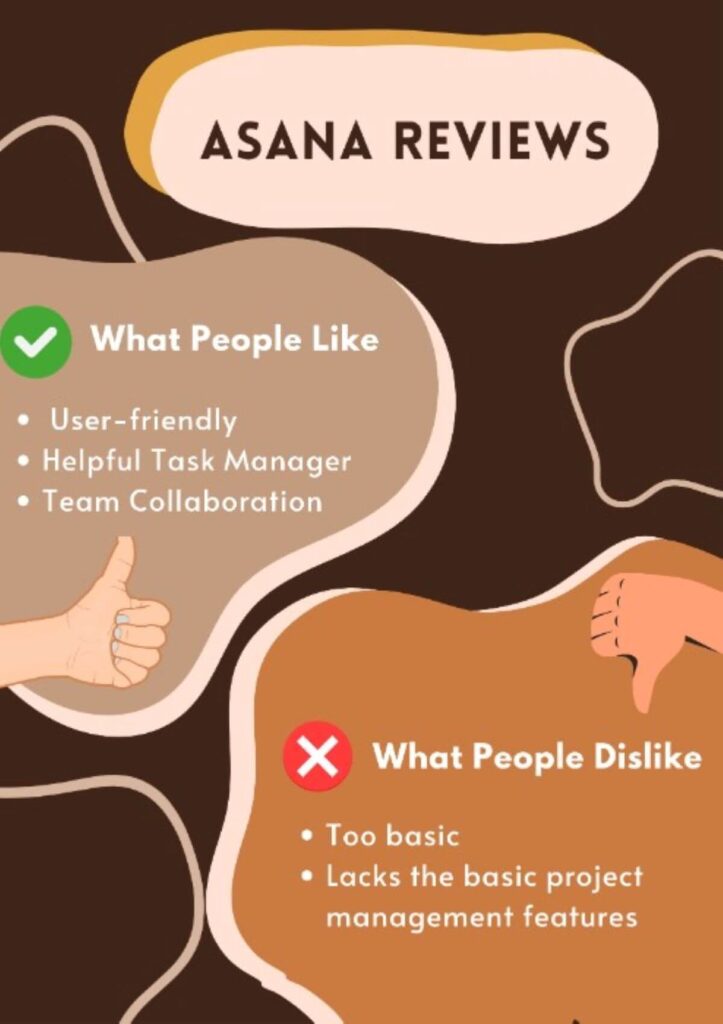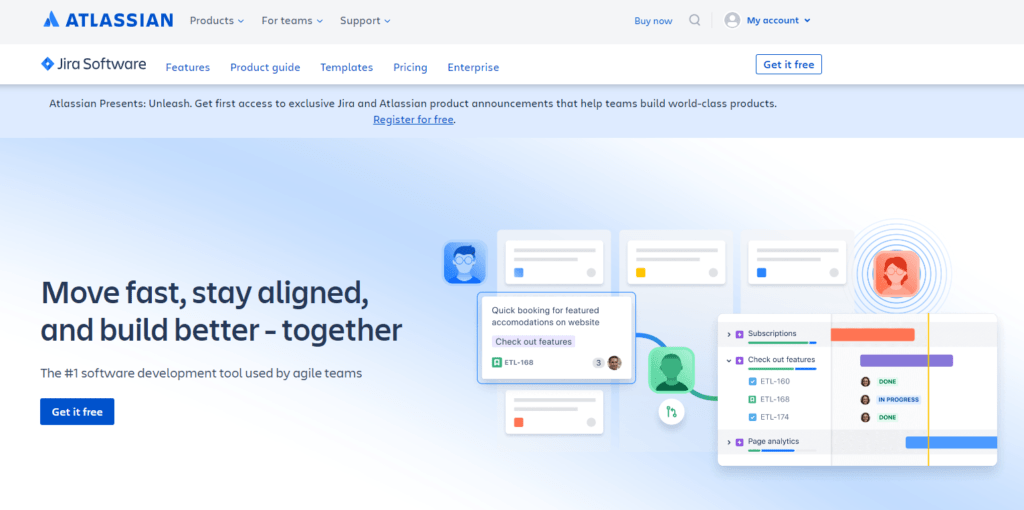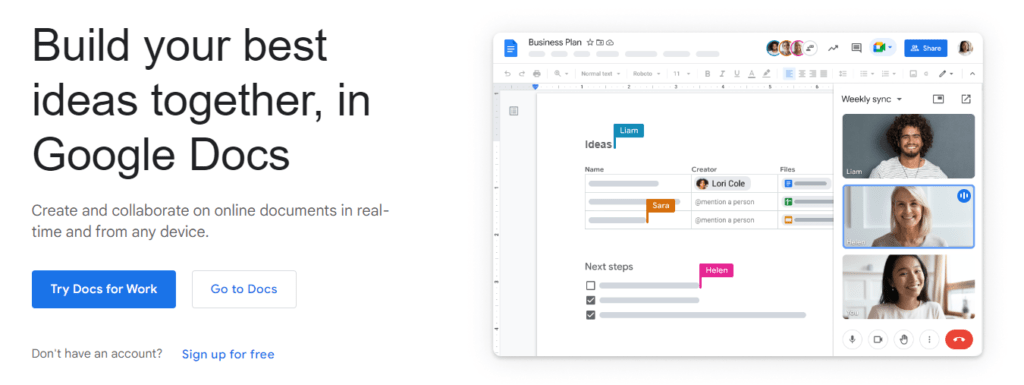
Asana is a project management tool that can help you manage your projects and tasks. However, in this blog post, we will discuss the Asana pros and cons. Whether or not Asana is right for your online business depends on your individual needs, so be sure to read on to find out more.
What is Asana?
Asana is a project management software that enables users to collaborate on tasks and projects.
What Advantages Does Asana Offer?
When it comes to project management tools, there are a lot of different tools out there to choose from. Asana is one of the most popular options and for good reason:
1. Great for Collaboration
Designed to help teams better collaborate on projects, and it offers a wide range of features to help with that. For example, Asana lets you create task lists, set deadlines, and assign tasks to specific team individuals. Their built-in messaging system makes it effortless to communicate with your team about a project.
2. User-friendly
Asana has a user-friendly interface built in with all of its features. Its simple user interface design makes it easy to use and navigate, which makes it great for teams that are just getting started with project management tools.
3. Integrations
Asana has tons of integrations available, which makes it simple to integrate other apps into your workflow. For example, you can easily connect Asana with Slack or Jira for even better collaboration. so you can use it as part of a larger system.
4. Free-plan offer
The free subscription offered by Asana is a fantastic method to try out the service and decide if it’s perfect for you, although there are some restrictions to be aware of.
5. Great Task Managing Implementations
Users may easily create, assign, and organize tasks using Asana’s task management functionality. Ultimately ensuring structured and effective projects. It’s efficient because it helps you get organized and track your progress on projects.
6. Customizable
It’s customizable because you can create your own workflows and adapt them to your specific needs. Overall, Asana is an excellent option for project management, and it’s definitely worth considering if you’re looking for a new tool to use.
What are the disadvantages of using Asana?
Asana is a popular project management tool, but it has its drawbacks:
1. Easy to duplicate tasks
One of the biggest problems with Asana is that it’s very easy to create duplicate tasks. This can lead to confusion and wasted time, as team members work on the same thing without realizing it.
2. Not Suitable for Large Projects
Another issue is that Asana can be hard to use for complex projects. It’s difficult to get an overview of all the tasks and subtasks. With ease, you can miss something important.
3. No Time Tracking Tool
Asana doesn’t offer a lot of flexibility when it comes to project timelines. There’s no way to accurately report how much time is being spent on a task or project.
4. Not Friendly to New Users
Asana has way too many functions, some might say a little bit too much than the basics, making it hard for new users to maneuver around the application, thus, taking longer time for them to learn the mechanics.
For these reasons, Asana may not be the best tool for every project. However, it can still be useful in some situations.
Asana Main Features
Asana has three main features:
Task management
Asana’s task management feature enables users to create and assign tasks, set deadlines, and track progress.
Team collaboration
Asana’s team collaboration feature enables users to communicate with team members, share files, and work on tasks together.
File sharing
Asana’s file-sharing feature enables users to share files with team members and view files shared with them.

Asana offers a free plan and paid subscription plan
Asana’s free plan
Asana’s free plan is a great way to get started with the product, but there are some limitations to be aware of as it is Asana’s pros and cons.
- You can only have up to 15 tasks in your Asana account at any given time. This may not be enough for some users, especially if you’re trying to manage a large project.
- Additionally, the free subscription does not include access to Asana’s premium features, such as email integration or advanced search.
- You will only be able to use Asana’s web interface; the mobile app is not available with the free subscription.
Despite these limitations, Asana’s free subscription is still a great way to get started with the product and see if it’s right for you.
Asana’s paid subscription
Asana’s paid subscription has Asana pros and cons.
- On the one hand, it gives you access to features that can help you be more productive, such as templates and advanced search, and easy to use.
- On the other hand, it can be expensive, and some users have complained about Asana’s customer service.
Overall, whether or not Asana’s paid subscription is worth it depends on your needs and budget.
If you’re looking for a comprehensive project management tool, Asana is a good option.
However, if you’re on a tight budget, there are cheaper alternatives available.
What do people think of Asana?
Asana has received mixed reviews. Some reviewers say that Asana is user-friendly and helpful for managing tasks and collaborating with team members.
Other reviewers say that Asana is too basic and that it lacks features that are available in other project management software.
Overall, Asana is a project management software that has some good features but also some drawbacks even though it has Asana pros and cons.
What are the advantages of Asana?
When it comes to project management tools, there are a lot of different tools out there to choose from. Asana is one of the most popular options and for good reason.
Asana is designed to help teams better collaborate on projects, and it offers a wide range of features to help with that. For example, Asana lets you create task lists, set deadlines, and assign tasks to specific team members.
It also has a built-in messaging system so you can easily communicate with your team about the project. Plus, Asana integrates with a lot of other productivity tools, which makes it even more versatile.
Overall, Asana is a great option for project management, and it’s definitely worth considering if you’re looking for a new tool to use.

How To Decide If Asana Is The Right Tool For You
Trying to decide if Asana is the right tool for you?
Here are a few things to keep in mind:
- First, think about what kinds of tasks you need to track. If you primarily need to manage simple to-do lists, Asana might be overkill. However, if you find yourself constantly needing to track complex tasks with multiple subtasks, Asana could be a good fit.
- Another thing to consider is whether you need to collaborate with others on your projects. If you’re working alone, any task management tool will do. But if you frequently need to share tasks and work together on projects, Asana’s team features could come in handy.
- Lastly, think about whether you need mobile access to your task manager. If you only ever use a desktop computer, this won’t be an issue. But if you often find yourself needing to access your task list on the go, Asana’s mobile apps could be a lifesaver and easy to use.
Ultimately, there’s no one-size-fits-all answer when it comes to choosing a task management tool. It all depends on your specific needs and workflow. But if you keep these things in mind, you should be able to decide whether Asana is right for you.
Is Asana The Best App There Is?
Asana is a popular project management tool, but it’s not the right fit for everyone. If you find that Asana isn’t working for you, there are a few other options worth considering.
1. Hubstaff Tasks

Hubstaff Tasks is a good option for teams that need to track time spent on tasks.
Tracking time spent on tasks is a crucial part of any project, but it can also be a huge time sink.
Hubstaff Tasks aims to make the process as smooth and painless as possible. The app automatically starts tracking time as soon as you start working on a task, and it provides an intuitive interface for adding details like descriptions, due dates, and tags.
You can also easily see how much time has been spent on each task, and generate reports to share with your team. Best of all, Hubstaff Tasks integrates with a variety of other productivity apps, so you can keep all of your project data in one central location.
If you’re looking for an easy way to track time spent on tasks, Hubstaff Tasks is definitely worth checking out.
2. Trello
Trello is a popular tool that uses a Kanban-style approach to project management.

Like Kanban, Trello focuses on the visualization of work, using boards and cards to represent tasks.
However, Trello also offers a number of additional features, such as the ability to create checklists, add attachments, and assign due dates. These features make Trello an excellent choice for managing small projects with a team of collaborators.
In addition, Trello integrates with a number of other tools, making it easy to keep all of your project information in one place. As a result, Trello is an excellent tool for anyone looking for a Kanban-style project management solution.
3. JIRA
JIRA is a software development tool used by agile teams to plan, track, and release software.

Its name comes from the Japanese word for “go”, which reflects its focus on helping teams move quickly and efficiently.
JIRA is designed to be flexible and adaptable, so it can be used for a variety of projects, from small bug fixes to large-scale software releases.
Additionally, JIRA integrates with a number of other tools, making it easy to get started. Whether you’re just getting started with Agile or you’re looking for a tool to help streamline your workflow, JIRA is a great option.
4. G Suite Sheets and Docs

G Suite’s Sheets and Docs for project management. If you’re looking for an efficient way to manage projects, you may want to consider using G Suite’s Sheets and Docs.
Sheets is a spreadsheet application that can be used to track project data, and Docs is a word processing application that can be used to create project documents.
Both applications are accessible from any internet-connected device, and they can be used collaboratively. For example, you could use Sheets to track project milestones, and Docs to draft project proposals.
Using G Suite’s Sheets and Docs for project management can help you stay organized and on track.
Conclusion
There are also a number of Asana alternatives that are specific to certain industries, such as architecture or fashion design. No matter what your needs are, there’s likely an alternative to Asana that will better suit your workflow.
Frequently Asked Questions (FAQ)
What are project management tools?
Project management tools are made to help teams and individuals plan, organize, and manage projects. Typically, they provide tools for task management, team collaboration, scheduling, and progress monitoring.
How is it beneficial for an organization?
It is beneficial for organizations where there are multiple individuals working on the project, as project management tools will usually allow members to collaborate. This will produce a more efficient and organized working environment.
Is it necessary to own a project management tool?
While some might think that owning the tool is just another waste of money, most companies would invest in owning the tool because of how much beneficial it brings to their workflow.
Overall, a company without a project management tool is not as efficient as a company with one.
Is Asana suitable for small businesses or only large enterprises?
Asana is for all sizes of businesses, from small start-ups to massive corporations. Its features may be scaled and tailored to meet the demands of various organizations, making it appropriate for teams of all sizes.
What are the software applications that Asana can integrate with?
Asana offers a wide range of integrations with popular tools and software, including communication platforms like Slack and Microsoft Teams, file storage services like Google Drive and Dropbox, and time-tracking applications such as Harvest and Toggl.
How secure is Asana?
Asana is passionate about security and data privacy. Asana abides by security certifications and laws that are considered industry standards.
Can Asana be used for different types of projects?
Yes, Asana is a flexible project management solution that can be applied to a range of projects in many sectors. It is adaptable to diverse project requirements since it can be tailored to meet various processes and project management approaches.





